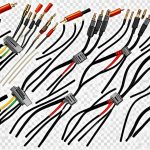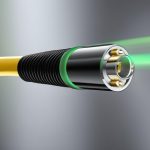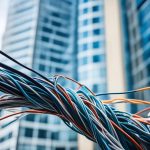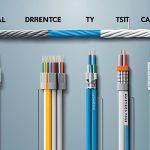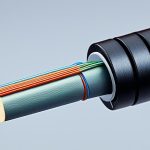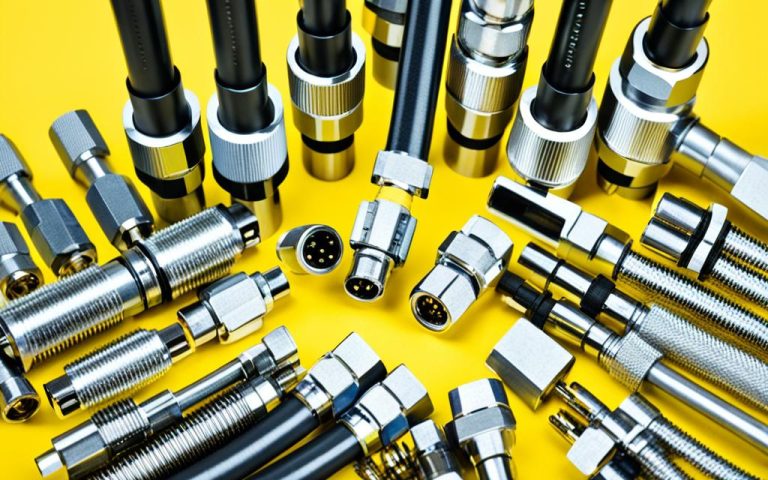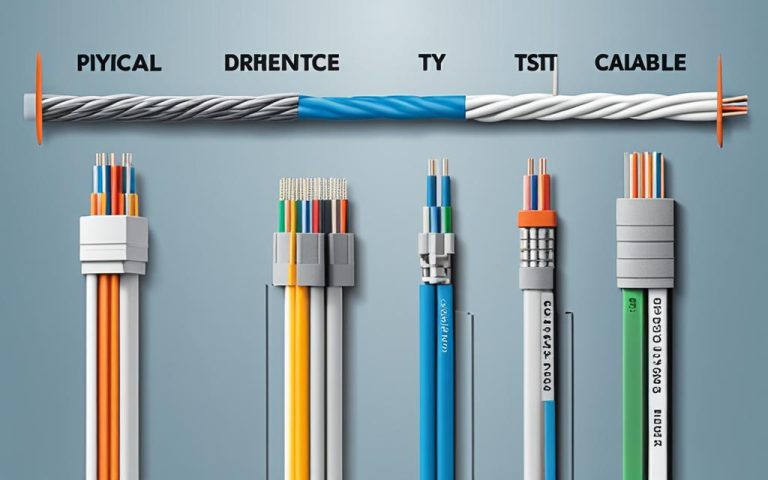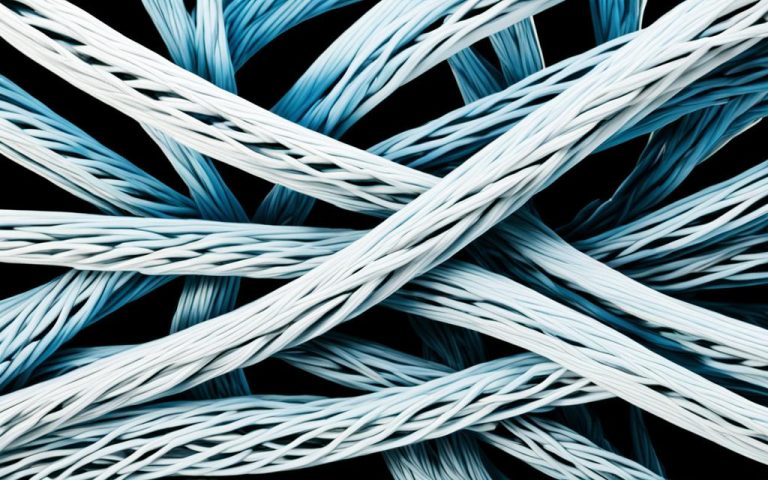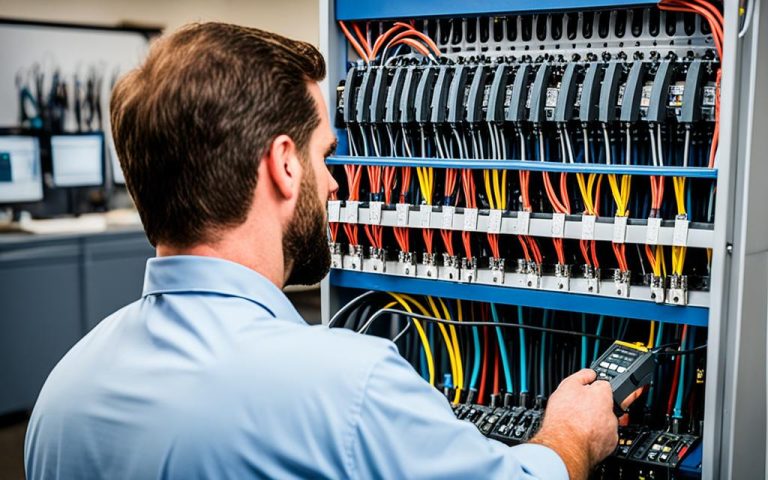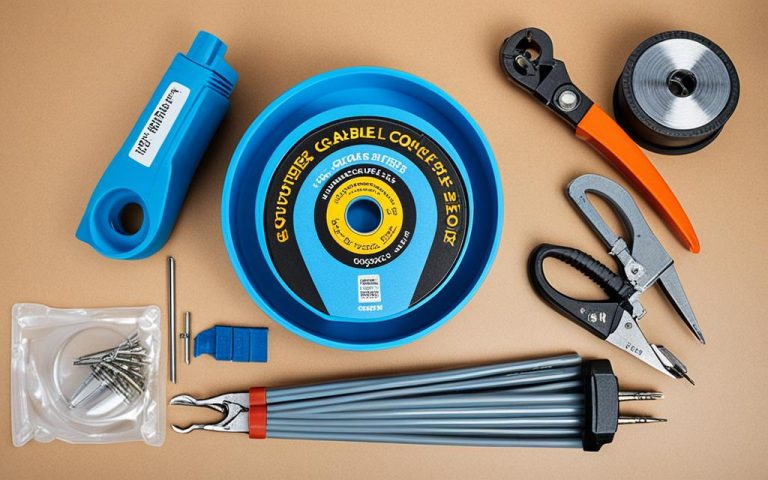Coaxial cable technology has come a long way from its humble beginnings. Today, it stands at the forefront of connectivity and signal transmission, thanks to continuous innovations and advancements. These cutting-edge developments are revolutionizing industries that rely on high-quality signal transmission, such as telecommunications, aerospace, and test equipment.
With the advent of new technologies and materials, companies are now able to develop coaxial cable assemblies that offer low loss, improved flexibility, and exceptional performance even in challenging environments. This allows for seamless communication and enhances signal quality, opening up new possibilities for industries to thrive in the digital age.
In this article series, we will delve into the world of coaxial cable technology, exploring the latest innovations and trends that are shaping the industry. We will discover how companies like Mobiyu and Yangtze Optical Fibre and Cable are pushing the boundaries of what is possible, providing solutions that meet the evolving needs of industries. Join us as we embark on this exciting journey to uncover the future of coaxial cable technology.
Leaky Coaxial Cable Market Growth and Competitive Landscape
The leaky coaxial cable market is witnessing robust growth driven by shifting consumer preferences, technological innovations, and favorable market conditions. This growth underscores the market’s resilience, adaptability, and potential to foster innovation. The market is highly competitive, with numerous players actively competing for market share and dominance.
Leading companies in the leaky coaxial cable market include:
| Company | Key Players |
|---|---|
| Fujikura Ltd. | Telecommunications, aerospace, and test equipment |
| LS Cable_System | Telecommunications, aerospace, and test equipment |
| Nexans | Telecommunications, aerospace, and test equipment |
| AIR802 | Telecommunications, aerospace, and test equipment |
| KABELWERK EUPEN AG | Telecommunications, aerospace, and test equipment |
This intense competition in the market fosters strategic collaborations and drives continuous innovation. Players are investing in research and development to develop cutting-edge solutions that cater to diverse industry demands, resulting in a dynamic and evolving landscape.
Innovations and competition in the leaky coaxial cable market are propelling the industry forward, driven by evolving consumer preferences, technological advancements, and favorable market conditions.
“The growth of the leaky coaxial cable market underscores its potential to drive innovation and meet the diverse needs of industries relying on seamless signal transmission. The intense competition among key players encourages strategic collaborations and fosters continuous technological advancements.” – Industry Expert
Mobiyu’s Cutting-Edge Coaxial Cable Assemblies
Mobiyu, a Korean manufacturer, is renowned in the industry for producing high-quality and cost-effective coaxial cable assemblies. Their commitment to innovation and value is evident in three of their cutting-edge products: the PSC18SL with a slim body connector, the RG405 SMP Long Neck Right Angle Cable assembly, and the PSC18UL Ultra Low Loss Cable.
These coaxial cable assemblies boast unique specifications and features that cater to specific applications, meeting diverse industry needs. Let’s explore each product and how it stands out:
PSC18SL with Slim Body Connector
The PSC18SL is specifically designed for space-constrained environments where cable size and flexibility are essential. Its slim body connector allows for easy installation even in tight spaces. This assembly ensures reliable signal transmission without compromising performance or durability.
RG405 SMP Long Neck Right Angle Cable Assembly
The RG405 SMP is engineered for specialized test equipment applications. Its long neck right angle design facilitates easy connection in confined areas, making it ideal for test setups that require flexibility and precision. This assembly guarantees efficient signal transmission with low impedance and minimal signal loss.
PSC18UL Ultra Low Loss Cable
The PSC18UL is designed to meet the demands of long cable runs without sacrificing signal integrity. Its ultra-low loss characteristics ensure optimal performance over extended distances, making it suitable for applications that require reliable signal transmission over extensive networks.
These cutting-edge coaxial cable assemblies from Mobiyu showcase their commitment to delivering quality, reliability, and innovation. By offering tailored solutions for specific applications, Mobiyu empowers industries to achieve seamless and efficient communication without compromising signal quality.

Yangtze Optical Fibre and Cable’s Innovations at MWC Barcelona
Yangtze Optical Fibre and Cable (YOFC), a leading provider of optical fibre solutions, made a significant impact at the 2024 Mobile World Congress Barcelona (MWC Barcelona). The event served as a platform for YOFC to showcase their cutting-edge products and solutions that are shaping the future of communication technology.
Their innovations spanned five key areas, each addressing the unique challenges and opportunities of the digital era:
- Move Toward 5G Advanced: YOFC presented state-of-the-art optical fibre innovations for the 5G era. These advancements enable faster data transmission, higher bandwidth, and superior connectivity, unlocking the full potential of 5G networks.
- New Hub of Green Computing: YOFC showcased their commitment to sustainability with their environmentally friendly solutions. Their green computing solutions leverage optical fibres to minimize energy consumption, reduce carbon emissions, and create a more sustainable digital infrastructure.
- New Value of Digital Energy: YOFC unveiled next-generation optical fibre technologies for the digital energy sector. These advancements provide efficient and reliable communication solutions for smart grids, renewable energy integration, and other digital energy applications.
- New Experience of Digital Life: YOFC’s comprehensive all-optical connectivity solutions offer seamless and immersive digital experiences for consumers. These solutions cater to the increasing demand for high-speed internet, streaming services, and smart home applications.
- Bridge the Digital Gap: YOFC showcased their commitment to bridging the digital divide by bringing connectivity to underserved communities. Their efforts include deploying optical fibre networks in remote areas, enabling access to digital services and empowering communities.
YOFC’s presence at MWC Barcelona demonstrates their dedication to driving innovation in the optical fibre industry. Their advancements in 5G, green computing, digital energy, and digital life are revolutionizing the way we connect and communicate in today’s digital age.
The Future of Coaxial Cable Technology
The future of coaxial cable technology is heading towards exciting advancements, driven by the continuous innovation and the emergence of new technologies. As the demand for reliable and efficient RF and microwave solutions continues to grow, companies are investing in research and development to push the boundaries of coaxial cable technology.
One key trend in the future of coaxial cable technology is improved flexibility. Companies are developing flexible coaxial cables that can bend and twist without compromising signal quality. This innovation enables easier installation in tight spaces and opens up new possibilities for connecting devices and systems.
Another important trend is the reduction in signal loss. Coaxial cable manufacturers are striving to minimize the loss of signal strength during transmission. By using advanced materials and optimizing cable design, these companies are able to achieve lower loss rates, resulting in improved signal quality and reliability.
In addition to reduced loss, higher data transmission rates are a crucial aspect of the future of coaxial cable technology. With the increasing demand for faster data transfer, coaxial cables are being developed to support higher bandwidths and data rates, enabling seamless streaming, real-time communication, and efficient data transfer.
Furthermore, the future of coaxial cable technology is focused on compatibility with evolving network demands. As networks continue to evolve, including the emergence of 5G and other advanced connectivity solutions, coaxial cable manufacturers are adapting their products to meet the requirements of these new networks. This compatibility ensures that coaxial cables remain relevant and efficient in the ever-changing technological landscape.
The advancements in coaxial cable technology discussed above are paving the way for enhanced connectivity, signal quality, and the ability to meet the ever-increasing demands of industries such as telecommunications, aerospace, and test equipment. As companies continue to invest in research and development, we can expect to see more exciting innovations and emerging technologies that will shape the future of coaxial cable technology.

| Advancements | Trends | Emerging Technologies |
|---|---|---|
| Improved flexibility | Reduced loss | Advanced materials |
| Higher data transmission rates | Higher bandwidths | Optimized cable design |
| Compatibility with evolving network demands | Seamless streaming | Adaptation to 5G networks |
Conclusion
Innovations in Coaxial Technology are revolutionizing the way industries connect and transmit signals. With advancements in connectivity and signal quality, companies are pushing the boundaries of what is possible in seamless communication. Leading the charge, Mobiyu and Yangtze Optical Fibre and Cable have developed cutting-edge products and solutions that cater to the evolving needs of various industries.
The future of Coaxial Cable Technology holds even more promise. As the demand for reliable and efficient RF and microwave solutions continues to grow, the industry is investing in research and development to meet these demands. We can expect further advancements in connectivity, improved signal quality, and the ability to meet emerging trends and technologies.
The future trends in Coaxial Cable Technology include improved flexibility, reduced loss, higher data transmission rates, and compatibility with evolving network demands. These innovations will not only enhance the performance of existing applications but also enable the development of new applications and scenarios. As industries such as telecommunications, aerospace, and test equipment continue to rely on high-quality signal transmission, Innovations in Coaxial Technology will play a pivotal role in shaping the industry and enabling seamless communication in a digital-driven world.
FAQ
What industries benefit from advancements in coaxial cable technology?
Industries such as telecommunications, aerospace, and test equipment rely on high-quality signal transmission and connectivity provided by advancements in coaxial cable technology.
Who are the leading companies in the leaky coaxial cable market?
Leading companies in the leaky coaxial cable market include Fujikura Ltd., LS Cable_System, Nexans, AIR802, and KABELWERK EUPEN AG.
What are some of Mobiyu’s cutting-edge coaxial cable assemblies?
Mobiyu offers three cutting-edge coaxial cable assemblies: the PSC18SL with a slim body connector, the RG405 SMP Long Neck Right Angle Cable assembly, and the PSC18UL Ultra Low Loss Cable.
What unique specifications do Mobiyu’s coaxial cable assemblies offer?
The PSC18SL is ideal for space-constrained environments, the RG405 SMP is designed for specialized test equipment, and the PSC18UL is suitable for long cable runs without compromising signal integrity.
What innovations did Yangtze Optical Fibre and Cable showcase at MWC Barcelona?
At MWC Barcelona, Yangtze Optical Fibre and Cable showcased innovations in optical fibre for the 5.5G era, advancements in data center cabling solutions, next-generation optical fibres for the digital energy sector, comprehensive all-optical connectivity solutions for digital life, and efforts to connect underserved communities.
What are some key trends in the future of coaxial cable technology?
Key trends in the future of coaxial cable technology include improved flexibility, reduced loss, higher data transmission rates, and compatibility with evolving network demands.

